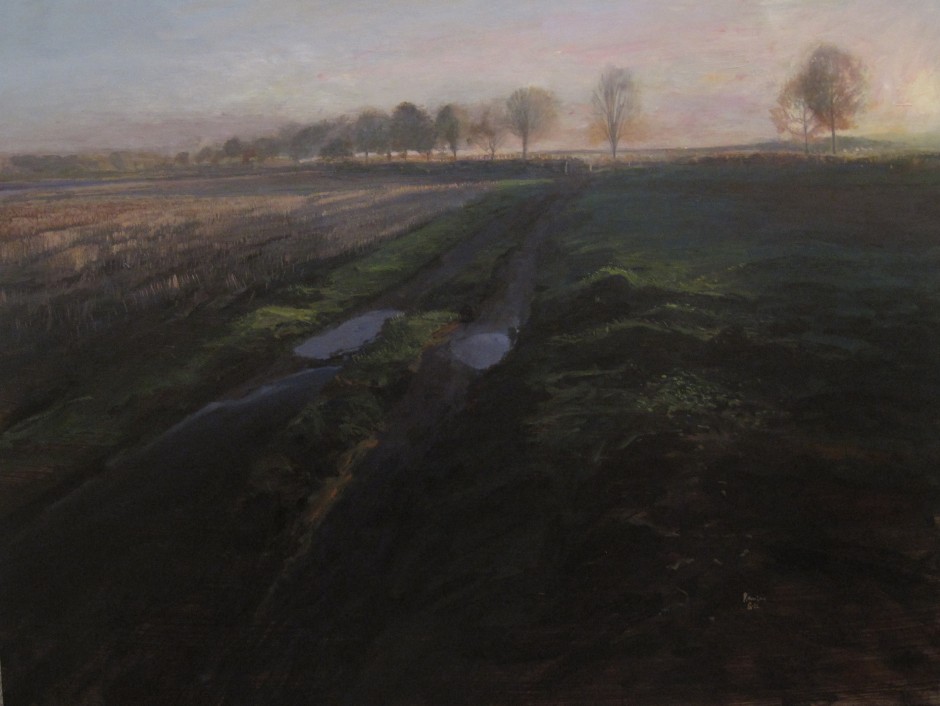Morning on the way to Walsingham
The shrine of Our Lady at Walsingham in North Norfolk has been a place of pilgrimage for nearly 1000 years at one time the most popular pilgrimage site not only in England but Europe, ranking along side Jerusalem. It was visited by peasants and kings.
Around would have spread a landscape of pilgrimage, a network of places where hospitality was dispensed, provisions and nick-nacks sold, pilgrims crowding the lanes and roads, funnelled to and from the shrine. It would have been a noisy, bustling space. In spite of a new shrine the lanes around are empty; the old route from London which threaded through the sandy Breckland is now overgrown and demoted to a footpath. The old route now passes through a landscape of empty fields and silent vanished villages, reduced to lumpen earth works. East Anglia is, to me, a place where the shadows of the past are somehow easier to discern, the dusting of time is thinner.
My walk had some of the excitement and anticipation of the approach of Walsingham, but was done alone, through a depopulated landscape. The weariness of long days walking was real but the singing, chattering pilgrims could only be imagined. Yet, momentarily, in the haze of morning light, an avenue of trees could be transformed in the imagination to a ghostly procession of pilgrims tracing the footpath onwards.




